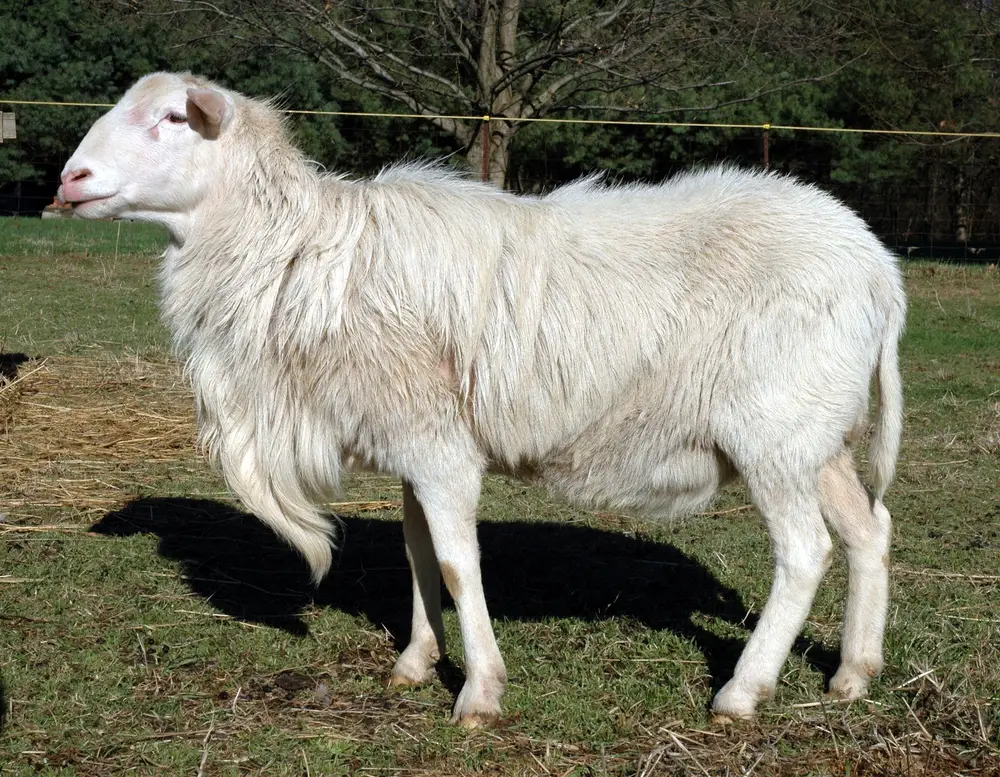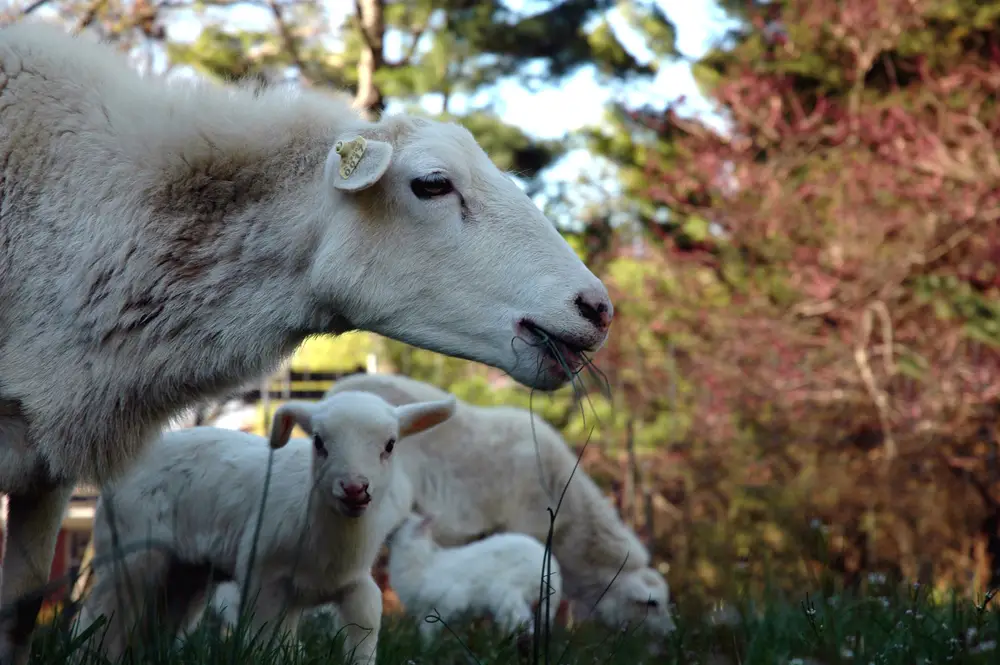St. Croix hair sheep are well-known for being parasite-resistant and are bred for meat production. This heritage breed usually consists of white sheep, but they can also vary from white with spots and tan to brown and black.
This article covers the St. Croix breed of sheep history, characteristics and answers to specific questions about the breed that novice St. Croix hair sheep breeders may find interesting or useful.
Table of Contents
St. Croix Breed Origin
St. Croix sheep come from the U.S. Virgin Islands. This heritage breed originated in the Caribbean and can be found across North America. The St. Croix breed is also called Virgin Islands White due to its predominantly white coloration.
St. Croix Breed Characteristics
St. Croix sheep have a hair coat. This means they don’t grow wool, so they’re a heat-tolerant sheep breed. They also adjust well to the cold temperatures. Hair sheep breeds require no shearing and are not used for wool production.

This breed of sheep is polled or hornless. It’s fly strike resistant, parasite-resistant, and hoof rot resistant. Whether your sheep are purebred or crossbred with other breeds, they’re likely to be eligible for registration in the St. Croix registry, as long as they’re polled.
How many lambs do St Croix sheep have?
St. Croix ram lambs hit puberty at about three months of age. Ewe lambs become sexually mature at about seven to eight months of age and are ready to lamb at 12 months of age. Although ewes typically have singles or twins, they frequently have triplets or quadruplets.
What is the gestation period, reproductive rate, and reproductive lifespan for St. Croix ewes?
The average gestation period for ewes is 150 days. The reproductive rate ranges from 150% to 200%. Ewes ovulate all year round, so St. Croix hair sheep breeders can expect to have two lamb crops per year or even three in 18 months. Their reproductive lifespan is eight to 10 years.
How big do St Croix sheep get?
The St. Croix sheep breed is medium-sized. The maximum weight of mature St. Croix rams is 200 pounds, while St. Croix ewes can weigh up to 150 pounds.
What is the purpose of St Croix sheep?
Since this breed of sheep is characterized by a hair coat, it’s not used for wool production and is usually only used for meat production. St Croix sheep are considered to be a meat sheep breed, mostly raised for their lean, tender meat. The ewes have good milking ability and can be used for cheese production as well.
What is the average life expectancy of a St Croix sheep?
The St. Croix breed has a life expectancy of 10 to 12 years. With the reproductive lifespan of the ewes of up to 10 years, this sheep breed is considered to be highly productive.
What is the most parasite-resistant sheep?
According to the St. Croix Hair Sheep International Association, studies show that St. Croix sheep rank as the highest naturally parasite-resistant sheep breed. Since parasites hinder sheep production, this breed of sheep can be great for small farms or beginner sheep farmers to start with.
Why are St Croix sheep called the “blue bloods of the sheep world”?
Besides its parasite resistance and long productive life, here are some other benefits of raising St. Croix Hair Sheep:
- Easy to care for
- Thrives in hot and cold climates
- Fly strike and hoof rot resistance
- Rams and ewes are generally docile
- Produces low-fat, quality meat
- Can be used for cheese production
Plus, this sheep breed can be crossbred with Katahdin and Royal white sheep. Crossbreeding can further improve the breed’s qualities – for instance, Katahdin sheep will also be parasite-resistant like its base breed, St. Croix.

